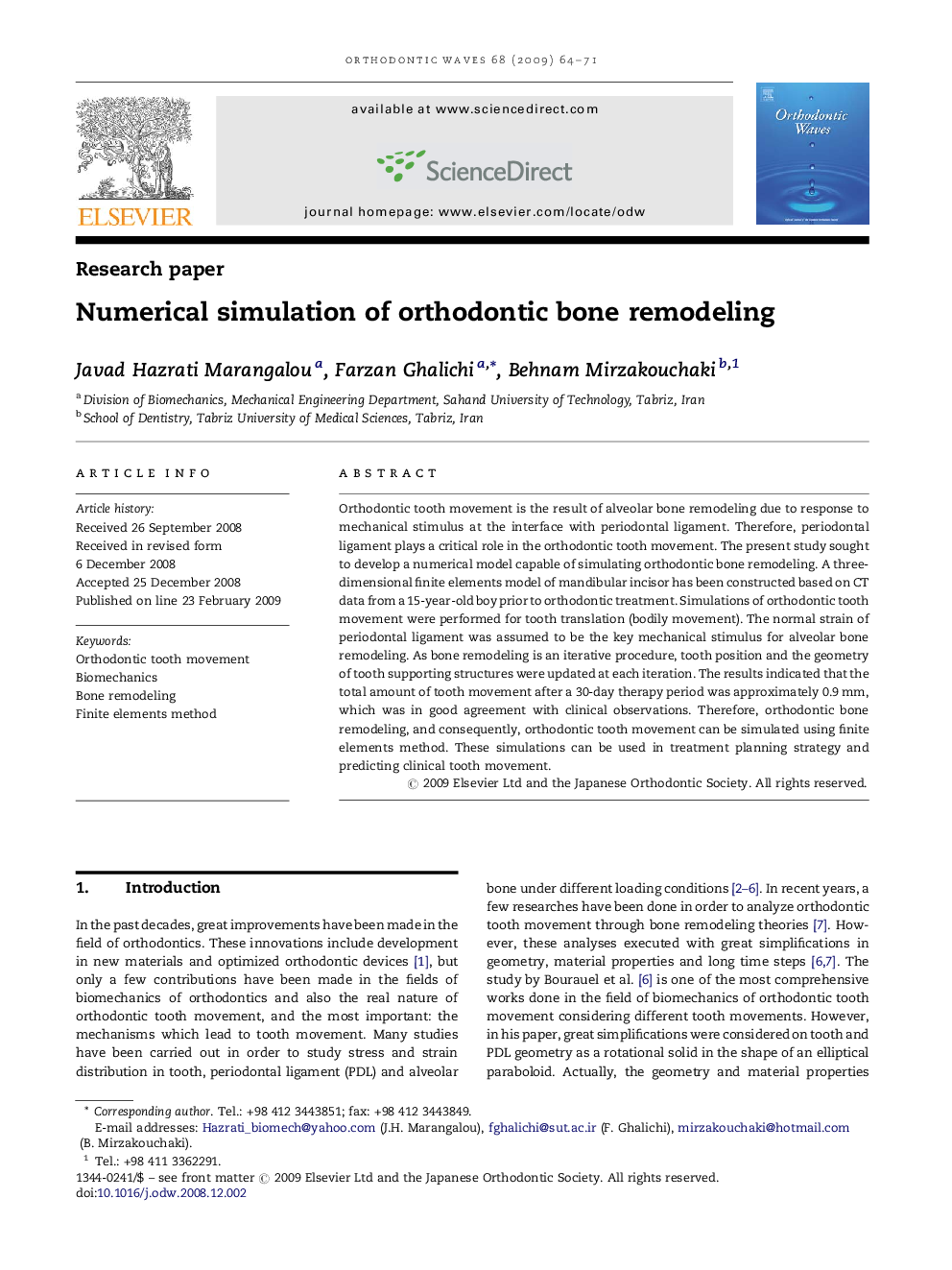| Article ID | Journal | Published Year | Pages | File Type |
|---|---|---|---|---|
| 3170706 | Orthodontic Waves | 2009 | 8 Pages |
Orthodontic tooth movement is the result of alveolar bone remodeling due to response to mechanical stimulus at the interface with periodontal ligament. Therefore, periodontal ligament plays a critical role in the orthodontic tooth movement. The present study sought to develop a numerical model capable of simulating orthodontic bone remodeling. A three-dimensional finite elements model of mandibular incisor has been constructed based on CT data from a 15-year-old boy prior to orthodontic treatment. Simulations of orthodontic tooth movement were performed for tooth translation (bodily movement). The normal strain of periodontal ligament was assumed to be the key mechanical stimulus for alveolar bone remodeling. As bone remodeling is an iterative procedure, tooth position and the geometry of tooth supporting structures were updated at each iteration. The results indicated that the total amount of tooth movement after a 30-day therapy period was approximately 0.9 mm, which was in good agreement with clinical observations. Therefore, orthodontic bone remodeling, and consequently, orthodontic tooth movement can be simulated using finite elements method. These simulations can be used in treatment planning strategy and predicting clinical tooth movement.
